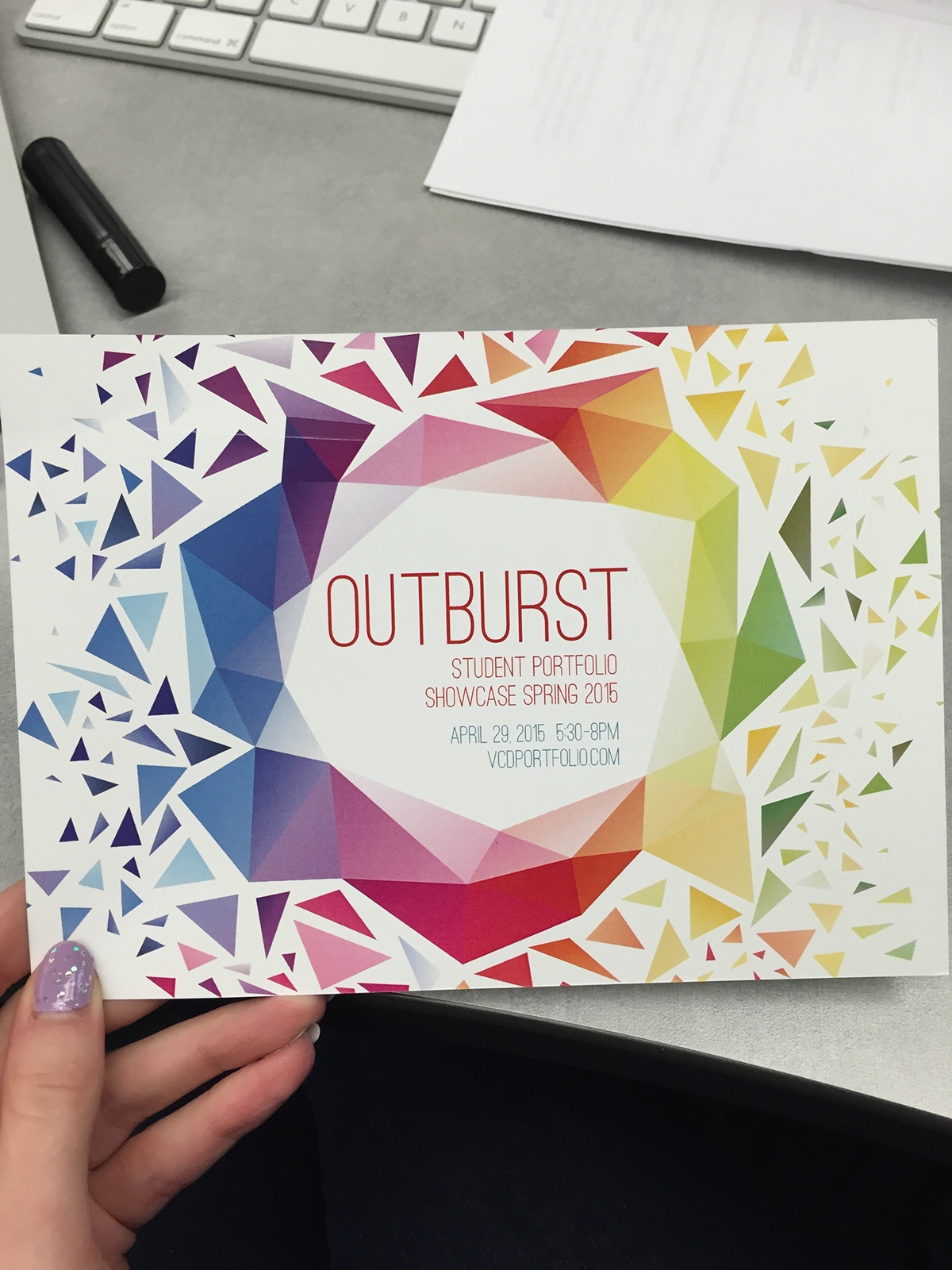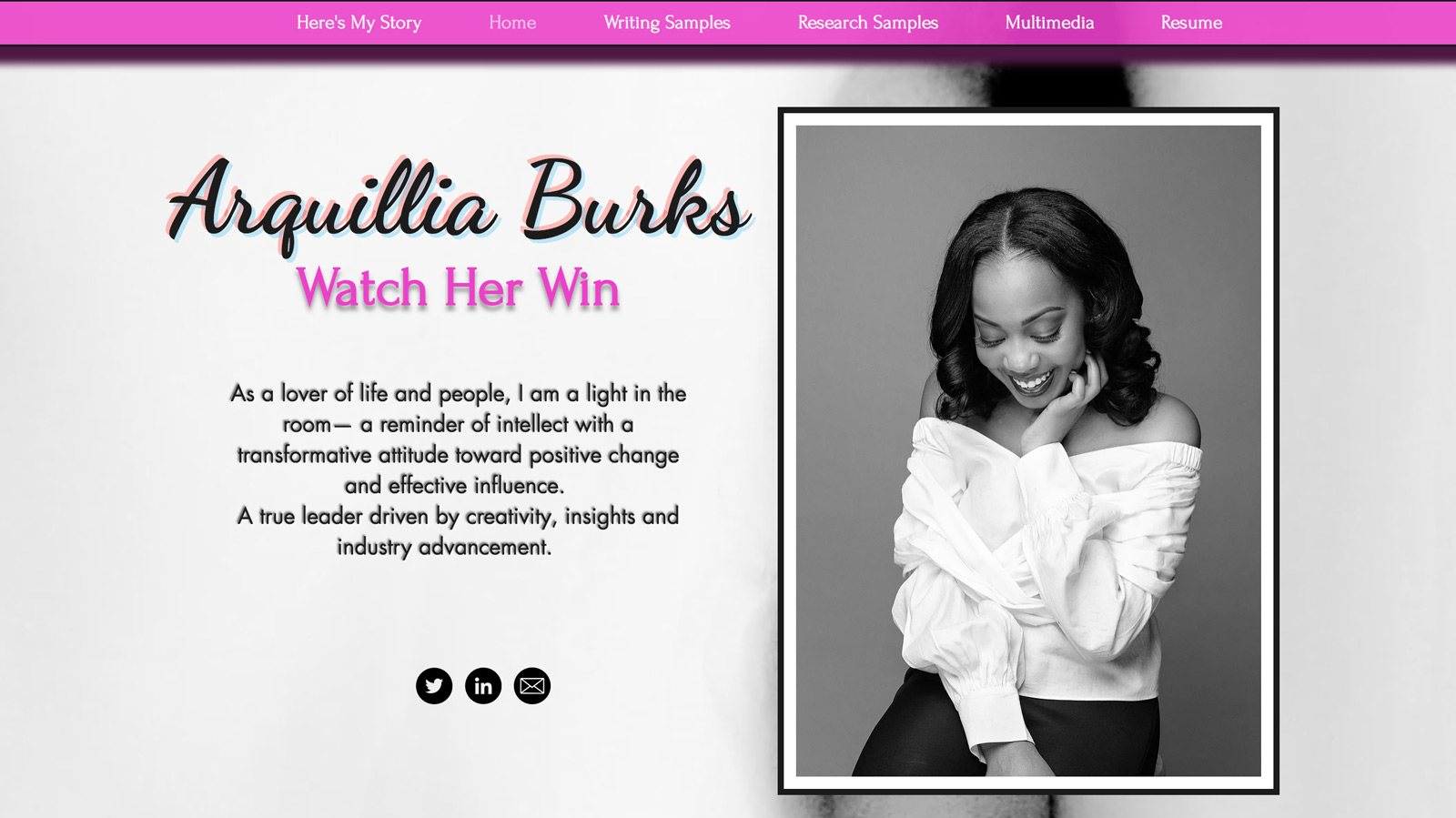This page is intended to serve as resource for anyone interested in learning more about ePortfolios.
- Student Eportfolio Canvas
- Student Eportfolio
- College Student Portfolio Template
- Samples Of Eportfolio For Students
What is an ePortfolio?
An ePortfolio is a collection of work (evidence) in an electronic format that showcases learning over time. When you think about your ePortfolio and the types of evidence that it contains, it is important to think carefully about its purpose and intended audience.
Student Resources An ePortfolio is a powerful bridge between academic and professional development as it can present evidence of your academic work, career goals, and personal interests. In a web-based portfolio, you can display a wide range of your work and achievements and easily share with others worldwide. GoEnnounce is on one mission: to give schools and districts access to digital portfolios. Eportfolios, at the most basic level, are simply a storage strategy for students to have throughout their K-12 education. Fortunately, there are many tools available for crafting engaging digital student portfolios – here are 10 best picks for fostering this creative exercise in the classroom. This is an excellent tool which was actually built by teachers with online student portfolios in mind.
An ePortfolio may contain all or some of the following:
- Files of various formats (text, pictures, video, etc.)
- Evidence related to courses taken, programs of study, etc.
- Writing samples (which might include several drafts to show development and improvement)
- Projects prepared for class or extracurricular activities
- Evidence of creativity and performance
- Evidence of extracurricular or co-curricular activities, including examples of leadership
- Evaluations, analysis and recommendations
Types of ePortfolios


Showcase/Professional ePortfolios — These ePortfolios are primarily a way to demonstrate (showcase) the highlights of a student’s academic career. Great examples of showcase ePortfolios on Clemson’s campus come from Health Sciences, Architecture and
Learning ePortfolios — These portfolios are typically created by a student as part of a course as a way to demonstrate learning and the learning process. These portfolios are often shared with other students to elicit peer feedback. Learning portfolios support the idea of formative feedback as an essential part of the learning process.
Assessment/General Education ePortfolios — At Clemson the use of portfolios played a substantive role in the assessment of our general education competencies. Using both formative and summative assessments feedback was provided to colleges, departments and instructors on the quality of evidence students used in their portfolios to demonstrate our general education competencies.
Faculty
At Clemson the use of portfolios played a substantive role in the assessment of our general education competencies. Using both formative and summative assessments feedback was provided to colleges, departments and instructors on the quality of evidence students used in their portfolios to demonstrate our general education competencies. We will continue to analyze student evidence collected from our general education courses in the Summer Assessment Institute.
Reports — requires log-in
Summer Assessment Reports: 2014, 2013, 2012, 2011, 2010
Students
Why would you want an ePortfolio?
The American Association of Colleges and Universities recent paper titled: It Takes More than a Major: Employer Priorities for College Learning and Student Success states that “more than 4 in 5 employers say an electronic portfolio would be useful to them in ensuring that job applicants have the knowledge and skills they need to succeed in their company or organization.” (Read the entire report online.) You can also view the highlights from 2011 Clemson University President's Advisory Board Meeting where one group of corporate, industry, community and academic leaders felt that an ePortfolio provided all the right opportunities for students to develop soft skills and market themselves to any industry.
Many Graduate School programs now require a portfolio, as well. For example, the MFA Degree Program in Digital Production Arts in the Clemson School of Computing requires a digital portfolio as part of their application
What can our office do for you?
The goal of Clemson’s ePortfolio office is to assist in creating and promoting your own Digital Identity or Digital Brand. Whether you are headed to Grad School, applying for jobs, starting your own business, or looking to become an independent artist, these are powerful tools. Our goal is to assist Clemson students in generating a narrative that sets them apart from their peers at other universities, using the cutting edge tools available to them, such as the Adobe Creative Cloud Suite.
ePortfolios, digital repositories of student work, have been transforming students' educational experiences for two decades. The Association of American Colleges and Universities (AAC&U) has long advocated ePortfolio adoption throughout higher education. As AAC&U’s Liberal Education and America's Progress (LEAP) initiative has gained prominence, the necessity for all students to have the opportunity to engage with high-quality learning in all the Essential Learning Outcomes (ELOs) has become clear. The need to increase access to higher education for a broad and diverse population has also highlighted the necessity of more diverse pedagogies and assessments that capture and reflect the multitude of modes through which today’s students demonstrate their learning. ePortfolios allow faculty and other educational professionals to help students organize their learning; preserve the variety of forms in which their learning occurs; and reflect upon their learning. They also enable the assessment of level of mastery for a broad set of ELOs.
In 2016, based upon proliferating research examining the efficacy of ePortfolios, AAC&U added ePortfolios to its list of High-Impact Practices (HIPs). As noted in the International Journal of ePortfolio, 'Key milestones leading to AAC&U's decision include the publication ten years ago of the Handbook of Research on ePortfolios (Jafar & Kaufman, 2006); research performed by many campuses through the Inter/National Coalition for Electronic Portfolio Research as well as associated publications (e.g, Cambridge, Cambridge, & Yancey, 2009); the launch in 2011 and the sustained publication since then of the peer-reviewed International Journal of ePortfolio; and in January 2016, the publication of research resulting from the Connect to Learning (C2L) project (Eynon & Gambino, 2017).' This scholarly foundation provides clear evidence regarding the effectiveness of ePortfolios as well as guidance regarding how to do ePortfolios well. AAC&U hopes to accelerate practice, research, and publication in this domain by providing key tools and publication venues for practitioners and researchers:
Student Eportfolio Canvas

- The International Journal of ePortfolio recently joined AAC&U
The electronic or digital portfolio is an ideal format for collecting evidence of student learning, especially for those outcomes not amenable or appropriate for standardized measurement. Additionally, ePortfolios can facilitate student reflection upon and engagement with their own learning across multiyear degree programs, across different institutions, and across diverse learning styles while helping students set and achieve personal learning goals. ePortfolios provide a transparent and portable medium for showcasing the broad range of complex ways students are asked to demonstrate their knowledge, skills, and abilities for purposes such as graduate school and job applications as well as for benchmarking achievement among peer institutions. Examples of ePortfolios can be found below.

ePortfolios for Learning:
Student Eportfolio
ePortfolios for Assessment:
College Student Portfolio Template
ePortfolios for Professional Development and Employment:
Samples Of Eportfolio For Students
With the release of the Degree Qualifications Profile (DQP), which lays out the essential learning for any associate, baccalaureate, or master's degree and the levels of demonstrated learning competence expected for attainment of each degree, ePortfolios have even more utility as unified ways for students to document their integrated learning among and across their educational pathways toward a degree. In addition, the principles and models for integrative general education programs developed through AAC&U's General Education Maps and Markers (GEMs) initiative are particularly well suited for an ePortfolio framework, which can help students, faculty, and others map the intentional pathways to demonstrated achievement of essential learning goals. When combined with VALUE rubrics, which mirror the ELOs, ePortfolios provide a means for direct assessment of student work drawn from the curriculum, cocurriculum, and beyond the campus. The work students produce through embedded assignments in courses, programs, activities, internships, research projects, and other HIPs becomes the basis for student progress and attainment in a unified ePortfolio system. ePortfolios create transparency around demonstrated learning and allow student artifacts to be used as evidence of accomplishment for employment, graduate school, or accountability and reporting to external audiences.